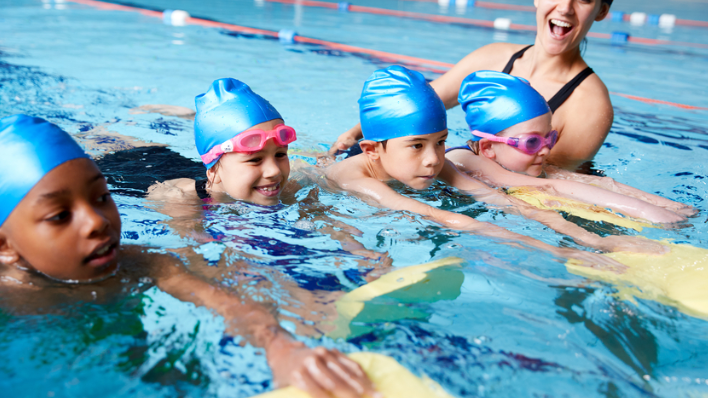The Case of Swim Lessons for Young Kids
by Alexander Tidd
Fire hydrants and kiddie pools aside, there’s been a big shift lately: kids are starting swim lessons younger than ever. From toddlers to preschoolers, more families are signing them up early. It’s not just cute photos; this has huge benefits and a few downsides worth unpacking.
Why Swimming Early Is a Smart Move
Drowning remains one of the top accidental causes of death in kids under five. But studies—like those featured by the American Academy of Pediatrics—show swim lessons for ages one to four significantly lower this risk by teaching survival skills such as floating, treading water, and turning over to breathe.
Harvard experts also highlight swim lessons as a powerful safety layer—not a cure-all—emphasizing structured instruction, small classes, and well-trained teachers. Even basic infant swimming classes help children become comfortable in water, while preschool lessons build confidence and coordination that endure.
Plus, swimming is great for development. It boosts strength, balance, and cardiovascular fitness, and builds confidence—kids gain pride over every paddle stroke and lap conquered. It also helps motor skills and even school readiness by reinforcing goal-setting and persistence. For kids with ADHD or autism, water-based exercise offers calming focus and improved behavior.
Parents benefit too. Year-round lessons, even in winter, help maintain skill—kids don’t forget how to swim when pool season changes. It gives families reliable physical activity and builds routines.
Paging Dr. Unstructured Play
All this structure brings a question: Are we packing kids’ schedules too full too soon?
Research from the University of Colorado and University of Denver suggests too many adult-led activities can stunt executive function—the skills kids need to manage time, focus, and self-control. When every moment is scheduled, children may miss out on free, imaginative play that fosters social skills and creativity.
A recent article even noted the rise of “hurried child syndrome,” where overscheduling preschoolers leads to stress, anxiety, and burnout Teachers and pediatricians are warning parents that too much structure can narrow kids’ development and replace natural curiosity with performance pressure.
Here’s the good news: swim lessons don’t have to be part of an overly scheduled childhood. They can be a smart, life-vital activity without turning your week into a structured obstacle course.
Start with the basics. If your child is walking, consider parent-child water familiarization classes. These help kids enjoy the water while learning basic skills, all with plenty of reassurance and playtime.
When they turn four or five, explore formal lessons. These are ideal ages for learning survival skills like floating and breathing.
Make sure lessons focus on fun first. Ask questions: Are instructors trained? Is safety a priority? Are kids encouraged to play as they learn? A supportive teacher can ease water fears and make skill-building joyful .
Balance it out with unstructured play at home. Let your child create water games, splash around in the pool, or run through sprinklers. Free play helps them use swim skills in creative, child-led ways and gives them the autonomy they need to thrive .
A Parents’ Guide to Smarter Swim Scheduling
Ask why: Start lessons because you value safety and your child enjoys water—not because it’s the next box to tick.
Watch for overwhelm: If lessons, music class, sports, and tutoring are stacking up, pause and reassess.
Rotate or soften: Trade intense lessons for free time, nature, or indoor mess-making sessions.
Treat breaks as normal: Skipping lessons for summer vacation is fine. Summer is for sandcastle swimming and popsicles.
Celebrate small wins: Floating independently, touching the wall, or kicking across the pool are all great signs of progress that doesn’t need trophies.
Swimming early gives kids survival skills and builds mental resilience. It can spark confidence that spills over into other parts of life. But it is most powerful when paired with free play.
Imagine a childhood where summer days are partly structured safety lessons in the pool, but mostly swimming, splashing, and spontaneous fun. That mix nurtures healthy, independent kids.
In a world where cell phones ping and demands stack up, teaching kids how to swim can feel like an essential life-saver. Pairing that with permission to be kids is how to build both safety and soul.
